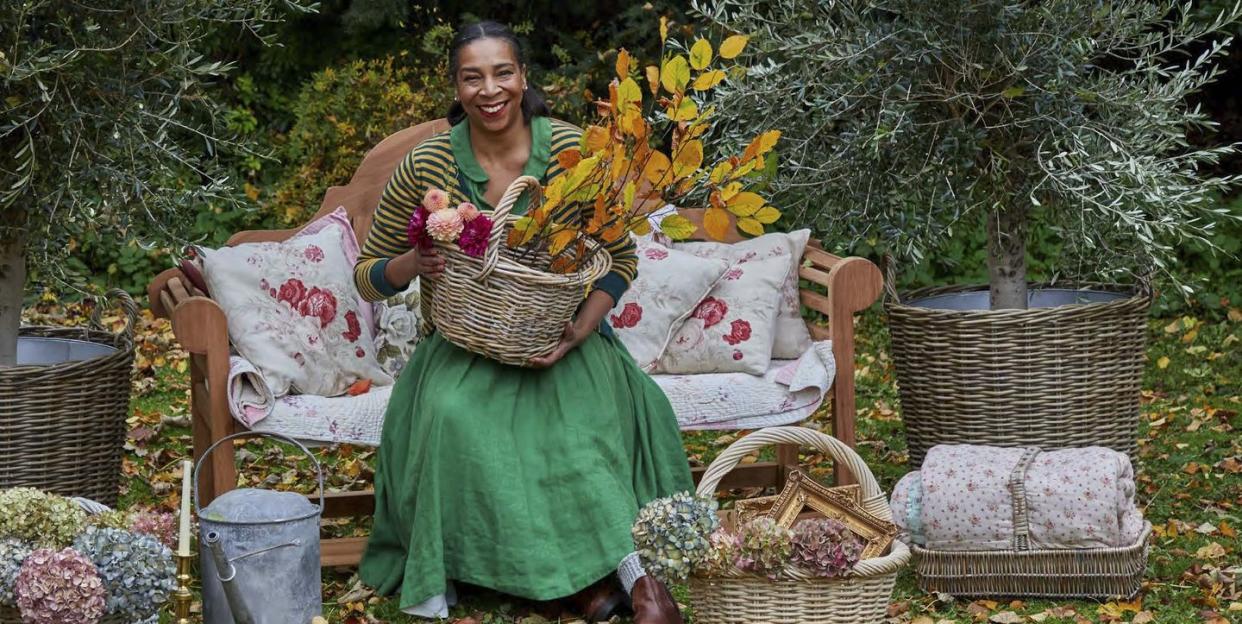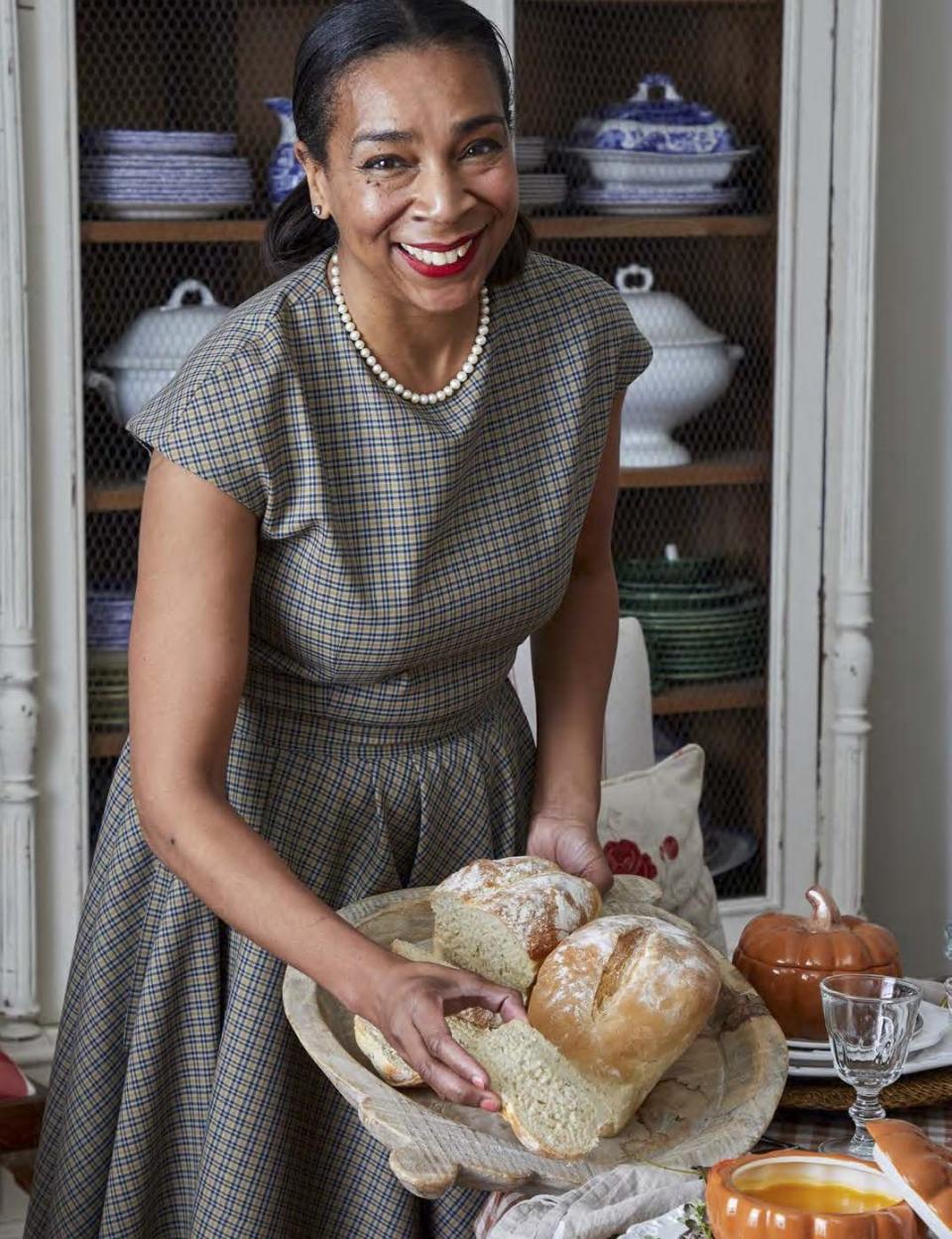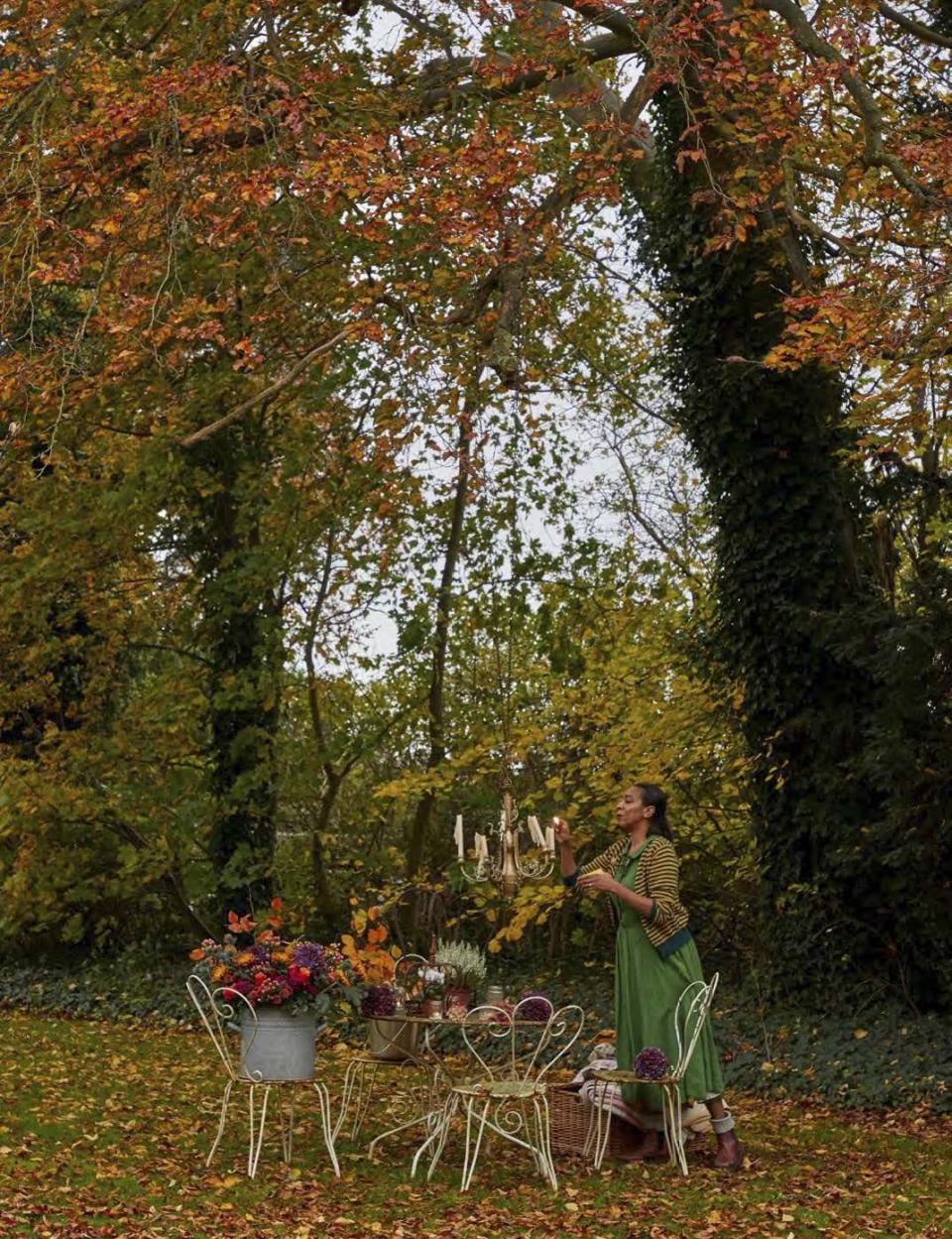Hill House Vintage's Paula Sutton on Race and Vintage Style

"Hearst Magazines and Yahoo may earn commission or revenue on some items through the links below."
British design influencer and queen of cottage core Paula Sutton is releasing her first book, Hill House Living October 19, about her life in Norfolk, her love of all things vintage, recipes, and the tips and tricks she has picked up along the way for a beautifully curated life. Below is an excerpt from Hill House Living.
As interior design preferences go, one would imagine that English country and vintage interiors, gardens and lifestyle isn’t the most controversial or radical of choices for a woman of 51 years of age. However, truth be told, it has recently been the subject of much interest due to the fact that I am a Black woman. As I have previously mentioned, my chosen aesthetic is not a trend or a fad for me, but a genuine way of living and one that comes very naturally to me. It’s a style focus born from an authentic love of all things faded, mismatched, vintage and time-weathered. In a world full of chaos, nothing speaks of comfort to me more than surrounding myself with interiors that hint at the relaxed and chintzy elegance of a bygone era. That certainly doesn’t sound to me like something that excludes people of colour, but the irony is, of course, that this style reflects an era in which a person with my skin colour would probably not have felt either relaxed, comfortable or welcome.

Despite this, when I first ventured beyond the confines of my reassuringly familiar and quiet life and began to share images of my home and myself, joining a vintage-loving online community that was as equally attracted to that sense of nostalgia, heritage brands and country living as I was, it genuinely did not occur to me that in the eyes of some, it might not be a natural habitat for me. My mother’s interest meant it was nothing out of the norm: she was a firm believer that people should live out their dreams and be unafraid of what other people think—so I did just that. (While my mother aspired to the gracious living of English country houses and their inherited aesthetic, she drew the line at my love of second-hand clothing, which in her opinion indicated a downgrade rather than a fashion statement. For her, as with many immigrant parents of the Windrush generation, the aim was to mark progress with new things, having previously been limited to pre-loved by default.)
However, with the mention of older-style country houses there often come thoughts of a colonialist past and a history based on exploitation and suffering. Although Hill House does not have a dark past connected to slavery, it’s understandable why these questions sometimes arise, particularly when voiced from across the Atlantic, where houses from certain periods of architecture and location are unmistakably connected to slavery and an era that does not reflect well on its predecessors. In these cases, no amount of architectural appreciation and positivity for the future should allow their truth and origins to be forgotten or glossed over.

Another important point to reflect on and challenge is the idea that a certain ethnic group must be a monolith of tastes, styles and ideas. There is not one ‘Black interior style’, but a glorious range of Black interiors lovers, with a wide and varied range of tastes, influences and aesthetics. Among many more serious and necessary methods of survival, interpreting style in original and innovative ways is what the diaspora in every geographical locale do best when outside of their ancestral homeland. Some may be directly influenced by their heritage, others perhaps more mildly so, and some not at all. It’s all good and it’s all just as much a healthy expression of ‘self’ and individuality as the other. Self-expression at its most creative and comfortable is a beautiful thing to witness, and it’s one of my greatest joys to come across a Black digital creator who has put their own distinctive spin on what some would describe as a traditional style.
Some might celebrate their style—as with mine—as ‘non-conventional’ for people of colour, and particularly for Black people. But what is ‘non-conventional’ if simply a lack of visibility in a particular space? One of the beauties of social media is that people are realising that certain genres of interior style and fashion are not the domain of one particular race, colour or ethnicity, but the domain of all who choose to express themselves with it—and happily many do.
You Might Also Like

